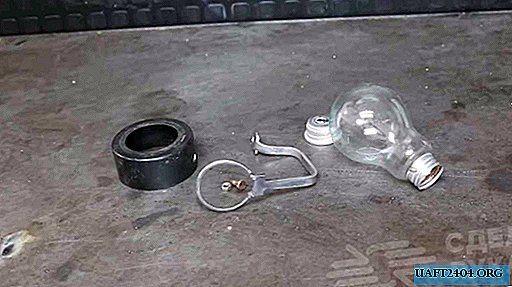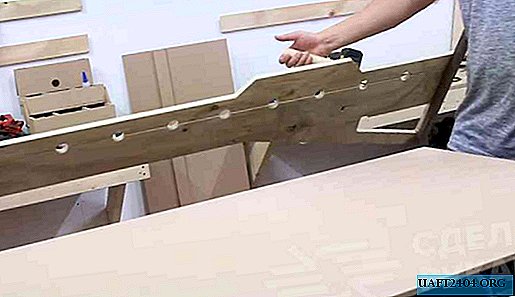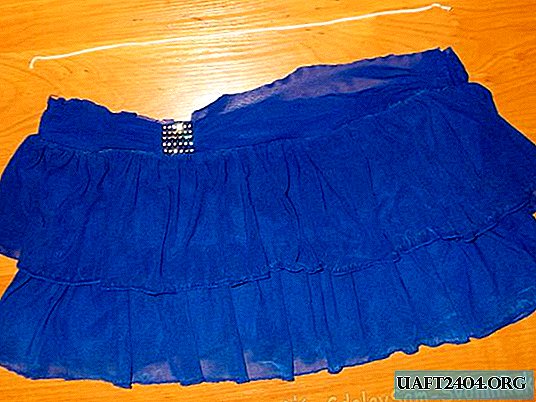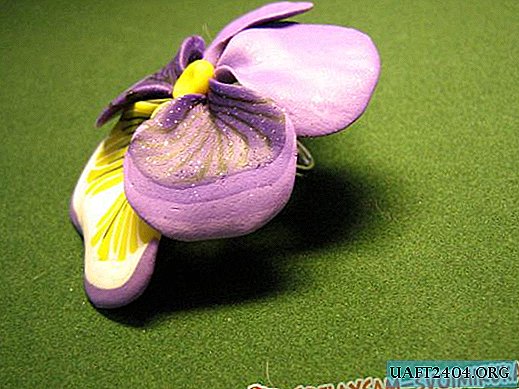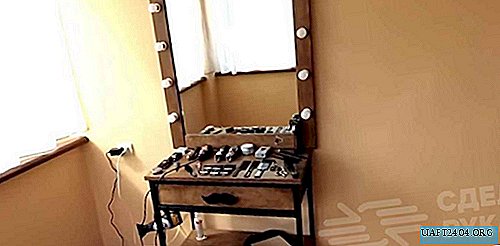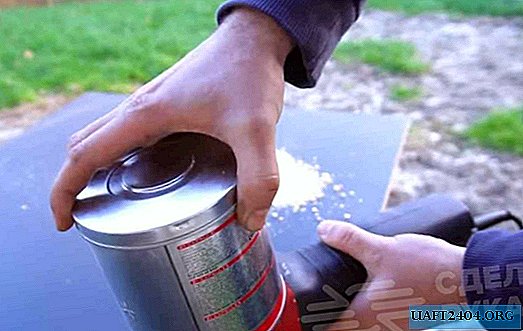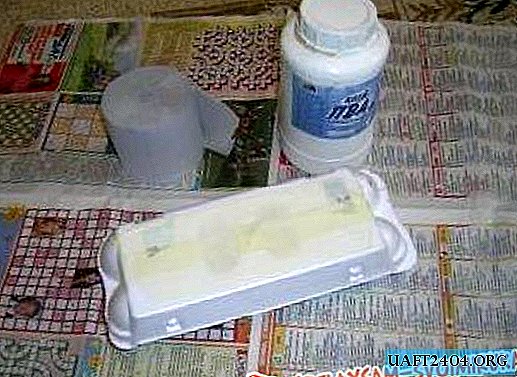Share
Pin
Tweet
Send
Share
Send
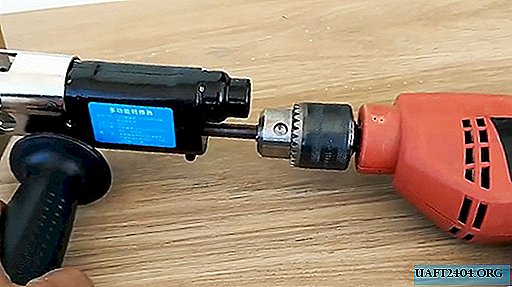
A good drill provides, in addition to tool rotation, a wide range of revolutions and a reverse. To expand its capabilities, there are various nozzles that transform the rotation of the spindle into reciprocating, vibrational and shock movements of the tool.
All references to the purchase are at the end of the article.
Electric-to-electric drill drive

It has a cylindrical oblong plastic housing with a mechanism inside that converts rotation into vibrations. A tool is attached at one end, and a drive is connected to the other.


First, insert the shank of the semicircular chisel sting into the hole of the clamping nut and fix it by rotating the nut with a wrench.

Then we connect a flexible shaft to the other end of the drive to transmit torque when securing its second end to the drill chuck and turning it on.



This nozzle selects both straight and curly grooves in wood, wood materials, some types of plastic, etc.
Cricket Nozzle

Its punch type cutting heads are mounted on the body in opposite directions. You can screw the hollow handle on them. The axis of the hexagonal drive is perpendicular to the cutting heads.

To use the "Cricket", screw the handle onto one of the heads, and fix the drive hexagon in the drill chuck.


We get the end face of sheet metal up to 1.6 mm thick into the gap between the punch and the die and turn on the drill. We move the tool in the direction of the cut, taking into account the speed of the drill and the thickness of the metal being cut.


In addition, large round holes are easily drilled in sheet metal with this nozzle, and artistic and internal cuts are performed.
Nozzle for forming the edges of the bolts and deburring

It looks like a steel diverging cone with longitudinal slots. The inner sides of the racks have cutting edges. There is a shank for attaching to the drill chuck. The nozzle works at low speeds.
After shortening the shaft of the bolt or stud, burrs and a sharp edge are formed. It is difficult or impossible to screw a nut onto such a rod.


We use a nozzle to cut the edges of the bolts and remove the burrs. For this, fixed in the drill chuck, and the rotating nozzle, we press to the end of the bolt or stud and hold it in this position for some time.
Then we remove the tool and make sure that the burrs are removed, and the edge is well formed. Now the nut is freely and easily screwed onto a bolt or stud.
Riveter nozzle

It has a hexagonal shank for securing a drill chuck, a key with sockets for interchangeable heads for rivets of different diameters, a plastic handle with a hexagonal seat and a ring with a locking screw to hold the handle on the nozzle body.
Before use, the nozzle should be prepared for work:
- install a replaceable head under the diameter of the rivets;
- put the handle on the nozzle body and fix it with the circlip;
- attach the shank of the nozzle to the drill chuck.

Using the nozzle is not difficult. We install rivets into the through holes in the fastened sheets.
We insert the rivet rod into the hole in the head until it stops and turn on the drill. In this case, the nozzle mechanism captures the rod and pulls it up. The head of the rod, rising, crushes the cylinder put on it and forms the lower head of the rivet. The upper one is formed from a portion of the exhaust rod.


Visual inspection and control by applying mechanical forces shows the strength and rigidity of the rivet joint.

Nozzle turning a drill into a jigsaw and not only

In it, the crank mechanism transforms the rotational movement into reciprocating. It is enclosed in a housing made of plastic or aluminum. Saw blades are connected to the mechanism and fixed with a lock. And through the shank, the nozzle is attached to the drill chuck.




Also included in the nozzle kit are several saws, an emphasis, and a plastic handle screwed into the housing on the side.
Insert the saw into the slot in the front of the case and tighten the mount with a hex wrench.
We put the stop in place, screw it on the right side, pressing the stop to the body, the handle.
Insert the shank of the nozzle into the cartridge and tighten with a key. Turn on the drill and make sure that the saw is working.
Clamp a wooden bar. Take the tool with one hand on the handle of the nozzle, with the other - drills.

We put the emphasis of the nozzle on the side bar and turn on the drill. The saw blade begins to cut, and soon the beam is sawn all over the section.
Also in the nozzle holder you can install a file and process metal parts.


Links for purchasing nozzles
- Nozzle - chisel - //ali.pub/3j4fsu.
- Scissor head - //ali.pub/3j4fd3.
- Deburring Nozzle - //ali.pub/3j4f90.
- Riveter nozzle - //ali.pub/3j4f4q.
- Nozzle - jigsaw - //ali.pub/3j4f2l.
Also, see 5 useful tips for a screwdriver - //sdelaysam-svoimirukami.ru/5299-5-poleznyh-nasadok-dlja-shurupoverta.html
Share
Pin
Tweet
Send
Share
Send

